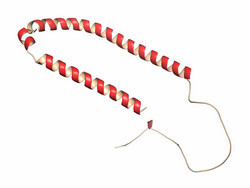Design of artificial proteins
Alpha-helices (aHs) are common secondary structures of spiral conformation in proteins, which are stabilised by hydrogen bonding. They play a key role in recognition between proteins or proteins and nucleic acids. Their interactions are defined by presentation of the specific residues on their surfaces. Foldamers are artificial molecules that mimic the structure of natural molecules and can fold into helices. A number of foldamer backbones have been synthesised in an attempt to reproduce and expand protein functions. The goal of the LXWAP (Re-designing zinc finger proteins by swapping alpha-helical domains with foldamer helices) project was to create new composite proteins by swapping natural aHs with oligourea helices as foldamers. For proof of principle, researchers selected transcription factors containing the so-called zinc finger domain. These metalloproteins specialise in nucleic acid binding and represent an ideal starting point to study the replacement of aHs with foldamers. At the beginning, researchers investigated the possibility of introduction of the hybrid oligourea-zinc finger domain in the transcription factor Zif268. They analysed the impact of this replacement on folding as well as on the metal binding ability. At the final stage, they evaluated the possibility of recreating a whole protein that contains a hybrid motif, and determined the metal and DNA binding characteristic of this novel chimeric protein. Researchers demonstrated that oligourea-zinc finger domains form helices that are good mimetics of natural aHs. The foldamer helices were successfully synthesised and displayed zinc-binding characteristics similar to natural domains. Preliminary results proved the viability of assembling a whole chimeric transcription factor uZif268 with proper functional folding and DNA-binding properties. LXWAP highlighted the feasibility of designing zinc-finger domains with defined properties and customising their recognition features. It represents a significant step towards the creation of artificial proteins for applications in research and medicine.







